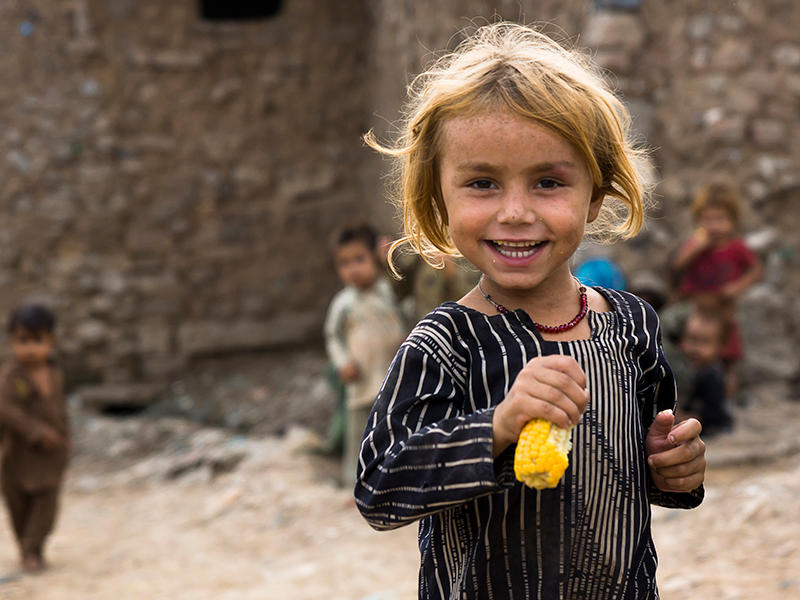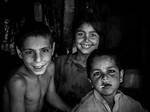Photojournalism
I hope that this article finds a more extended audience than the hard-core photojournalist. To a large extent travel-vacation photography also lies within the scope of photojournalism. When one ventures out in the open with a camera, willingly or unwillingly one does point the camera at strangers, buildings, places to capture ambience and memories. Although I have never had the luxury to actually just go somewhere for the sole purpose of photography, I do a fair bit of globe trotting and take the opportunity to capture life around me when I can.
I can tell you, over the years I have made many mistakes and paid the price and if I was to give a few simple tips to the budding travel photographer / photojournalist at the top of the list of my Not To Dos .. you would find written in bold capitals, Do Not Be – Unprepared.Preparation comes in all forms and I would say it all starts with your Kit.
Kit Preparations
Kit is not just restricted to Camera Body and Lenses, so let me just open my camera bag and see what things I pack. Do I really need to mention Spare batteries, spare SD/Compact Flash Cards, chargers and cables? Those are the essentials.
-Don't forget a couple of large plastic bags. I find them very useful for swapping lenses out in the open. Keeps the dust out from the inside of the camera and away from the rear optics of the lens. They are always useful in case of sudden showers, I keep one folded in my pocket for ready access to slip over my camera. If it rains it will be useful until I can find some shelter and safely tuck my camera away. The last thing you should do is open your camera bag in the rain and let all your equipment get wet.
-One of those multi tool gadgets, with pliers and screwdrivers. I don’t actually carry that in my camera bag, but belted on. You really don’t want to keep that in your camera bag, firstly to keep it from damaging your precious equipment and secondly, if you forget to take it out from your bag and pack it in your check-in baggage. You may have to give it up to airport security.
-A small flashlight
-Lens Cleaning Tissues, Microfiber wipes and a Lens blower.
-Lens Cleaning Fluid. Don’t forget to pack this in your checked in luggage at the airport, it will probably end up confiscated if its caught going through airport security in your camera bag.
-If it’s cold, I usually pack a pair of woollen half finger gloves. I know its not fashionable or cool. But they still keep your hands warm while still allowing your fingers dexterity in winters. Personally I have used them very comfortably in -5 C (23 F).
-I also pack one of those light rain jackets, that can be folded into a small package the size of a cigarette box. I have got one that is two sizes larger for me. In case of rain, sometimes one can’t remain under shelter for a long time, and have to walk in the rain. I do have a waterproof cover for my camera bag, but I find it tedious to put on and remove. I find it easier to pull out the rain jacket and wear it over my camera bag. I probably look like a hunchback .. but my cameras are safe.
I was in an old disused London underground station and was trying to get a view from the darkness into the light. I had wandered quite a distance into the pitch dark tunnel. But I just couldn't get the camera to focus on anything. Luckily I had my little flashlight. I used it to illuminate an area enough for my camera to focus on something and used my flash to illuminate the tunnel from inside. (I also have an image to show the view from the platform into the pitch black of the tunnel)
Social Preparations
The further afield one travels, the greater the cultural differences, the greater the variance in social norms and what is acceptable and what is not. What constitutes good manners and what doesn’t? One can never neglect social and cultural norms. Time spent in learning a countries customs and etiquette is never wasted. As a photojournalist you probably would interact with the people a lot more than other forms of photography do. A smile and smattering of a few local words will help you win friends and images.
Although we both live in the same country, we don't speak the same language. Pakistan has one national language and 4 regional languages. She speaks only Pushto and I don't. However the few broken words of Pushto that I did know, made her laugh and while the other kids shied away from me,she was my best friend along side me for the whole of the I explored their shanty village.
Location Preparations
It is always better to know what to expect in terms of architecture, layout, habitat and market design. Once you have chosen the shooting location it is not so difficult to get an idea of what the locale would be like, the net abounds with readily accessible images and information. Don’t forget to check what the weather will be like. Bright and Sunny, overcast, spells of rain, thunderstorms. What will the lighting be like, do I need a tripod, which angles would give me the best lighting? These are all questions you need to ask yourself.
While in the UK on Business visit, I had to meeting close to the historic city of Bath. I thought I would go a little early and have an hour or so to visit the city. I checked the the weather forecast was "Cloudy and Rain". I find cloudly overcast weather better for street portraits but not really that good for architecture. I decided I might go for a little HDR for the architecture and picked uo my tripod. I got some nice street portraits and a decent HDR from the visit.
How to 'not' look like a tourist
When one goes off the beaten track, one must remember the world can be a tricky place. Scam artists and tricksters abound and the naïve gawking tourist can be spotted a mile away. It shows from the body language and dress. Try not to stick out like a sore thumb by dressing too differently from the rest of the crowd. Your body language should be confident and you should at least appear to know where you are going. This kind of ties in with “social and location preparations”. Get an idea of the location, the roads and streets and where things are before hand, there are many mapping applications that you can use to familiarise yourself with the roads and streets of the locality. This enables you to explore the area with a fair amount of confidence. Looking as if you know where you are going and what you are doing.
This is the kind of swagger you need, not to look like a tourist.
Preparing for avoiding disappointment
Many places prohibit photography, usage of flash or usage of tripods. Some require an extra charge for photography. Try and find this out before hand so you wont make a journey all fired up to take some exciting images only to find yourself sadly disappointed at not being able to get the images you were so looking forward to capturing. Many places are not open to the public every day, don’t forget to check days of access to the public.
A business visit to Dubai, I had planned an evening for myself, as I wanted to photograph the dancing fountains of Burj Khalifa. Fully prpared with my gear and tripod and set it up with a preparatory shot of the Burj, to get the lighting right, when I was approached by security and told that I was not allowed to use my tripod, i needed a professionals "permit" or get written permission from the amdinistration. As I was being led off the premises by security, In defiance I took the parting image of the crowds of people enjoying the show while I wouldnt be.
Preparing to keep out of trouble
Continuing with those places that prohibit photography, in the previous paragraph I was talking about regular tourist spots and buildings, where at most you would get a polite admonishment of “Sorry you are not allowed to do that." In many countries there are government buildings, military installations that are not visibly marked as such and also photography of them is frowned upon and often constitutes breaking the law. Be wary of bridges and dams, undergrounds metro stations, airports, in such countries also. Again reading up and scanning online digital maps will give you a good idea of the types of buildings. (By now you must have realised that google maps is going to be your best friend as a photojournalist!)
Don’t forget to have your travel documents handy. You may be asked to present them. Ideally you should keep your passport with you at all times. But then again its risky so judge the situation and perhaps keep it safely locked away. I usually keep a copy of my passport with the visa page and some evidence of the hotel I am staying at. That usually suffices to get you out of trouble.
I was on assignment with the Sri Lankan Air Force back ilate 1990's (during the civil war with Tamil Tigers). I was arrested and detained for several hours. Firstly one of the innocuous buildings was Headquarters of Naval Intelligence and secondly I wasnt carrying papers. Eventually, the guys from the air force came and bailed me out. Luckily I was able to keep my roll of film.
Preparing to delete images
For one reason or another you may be asked to delete an image or images. A government building, prohibited area or it could just be that your subject felt it was an invasion of privacy when you took their photograph. Don’t hesitate, just delete it and show them. Don’t try and trick them. Now for the slightly unethical bit. Sometimes you will have to delete that simply amazing image and it hurts. Although with digital media, it hasn’t happened to me. I have had my entire roll of film confiscated in the good old days. Well if you ever read that little slip of paper that came with your SD card, it probably has a link to download some SD card recovery software. Go to the Link and download it. There are also a number of good SD card recovery freeware. So the moment you delete the image, remove the SD card and put it somewhere safe. Replace it with your spare SD card (You did remember to pack it didn’t you?) and just proceed with your photography as usual. When you get back to your laptop, slide in the old SD card and use the recovery free ware to retrieve the deleted image(s). Slightly unethical...but sometimes useful.
Of course this utility comes in handy for the purpose it is intended, the accidental deletion or bad sectors on your SD card.
Remember, this is all just preparation, before you hit the streets, before you leave the hotel room, before you step outside your home. It is all preparation. All that I have written is based on personal experience. I could give you countless examples of missed images and a lot of frustration and trouble that I could have avoided, just with little forethought and preparation.
But with all these Don'ts … my next biggest advice would be .. DON’T FORGET TO HAVE FUN.
HAVING FUN











